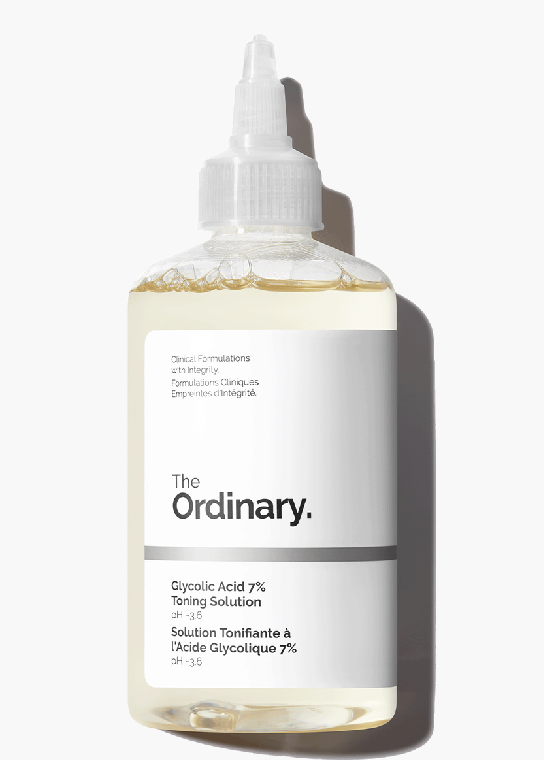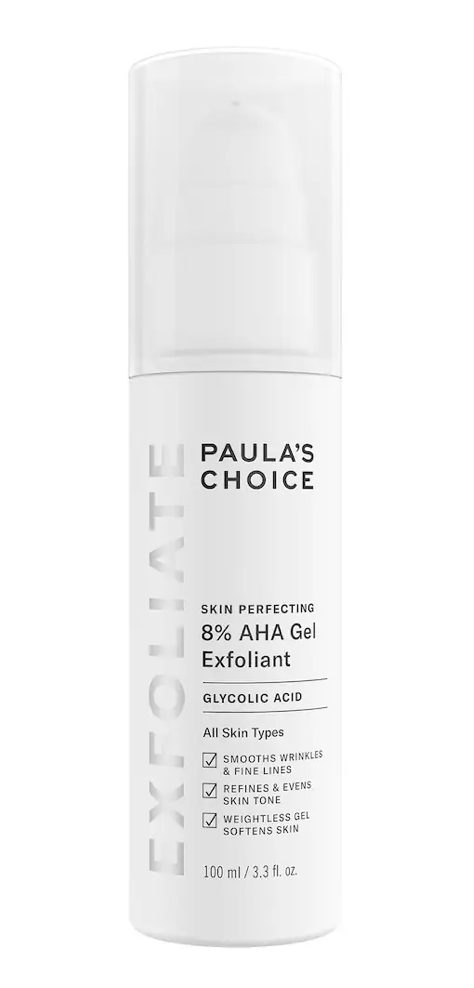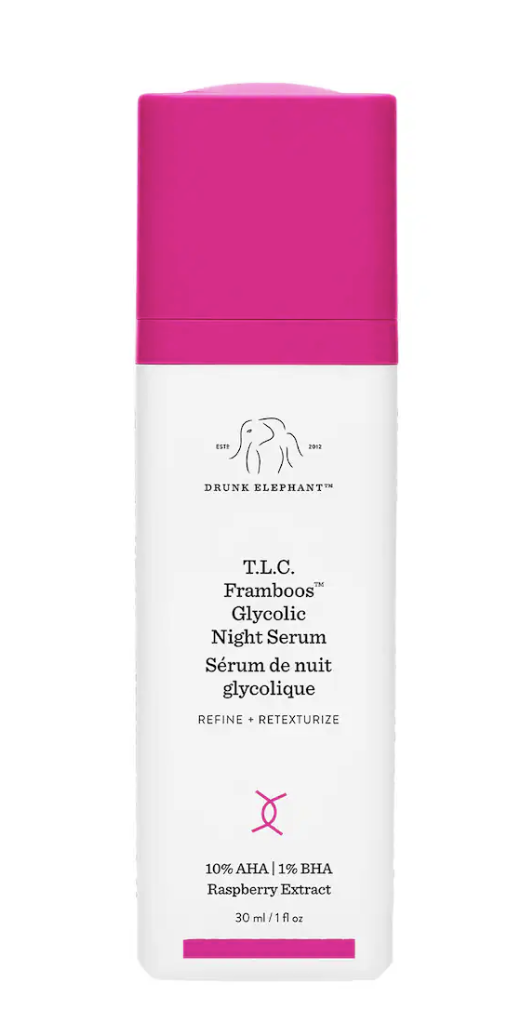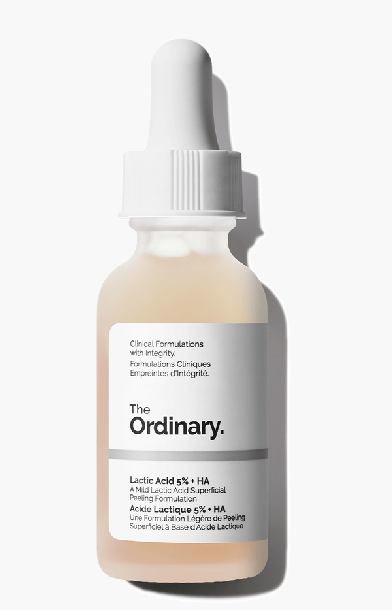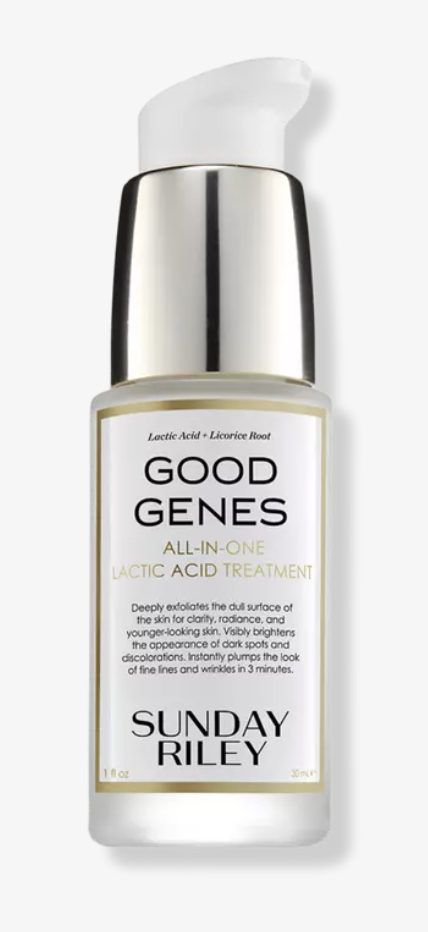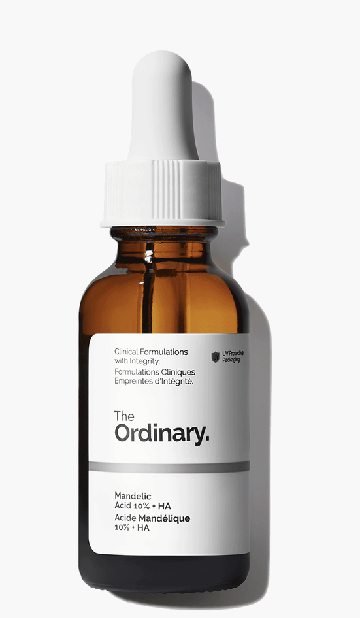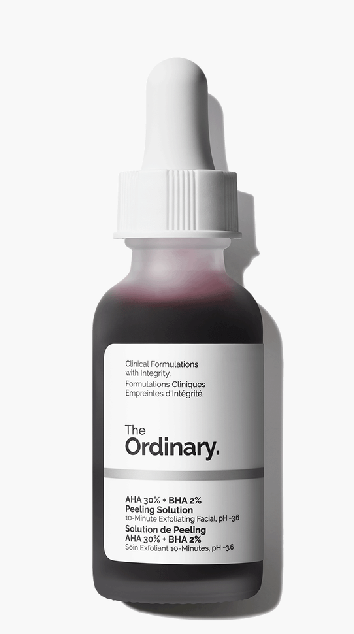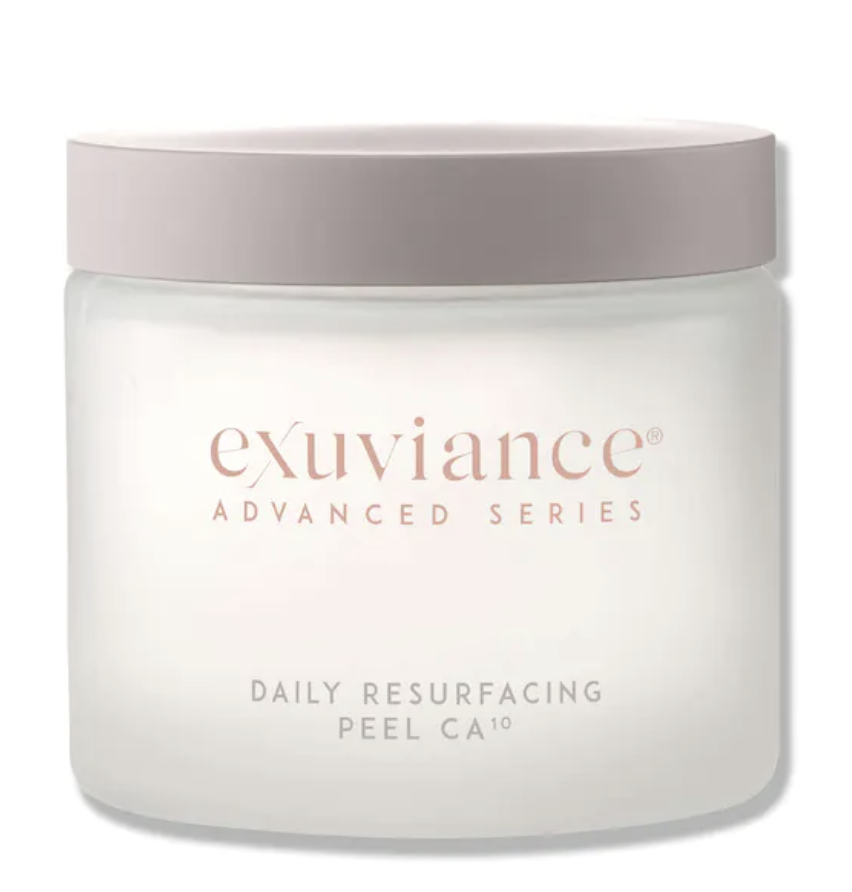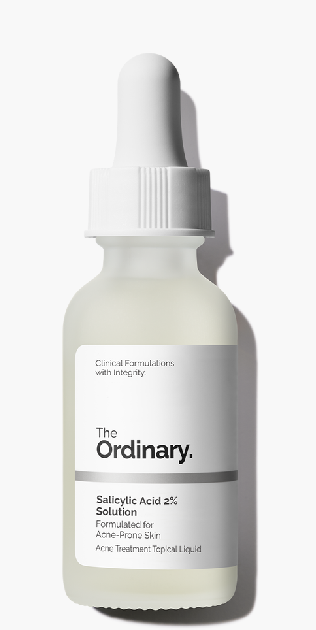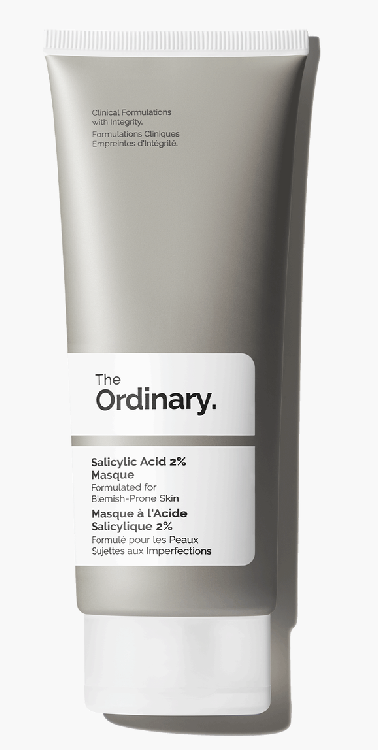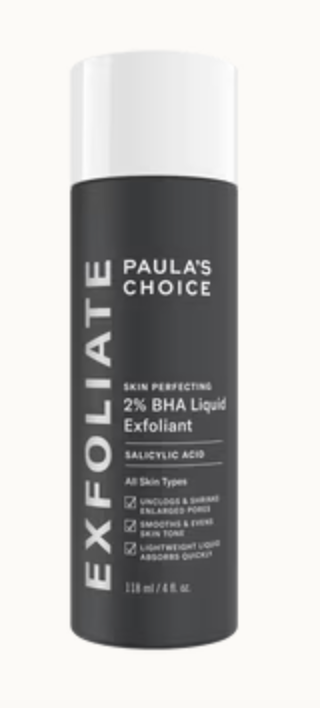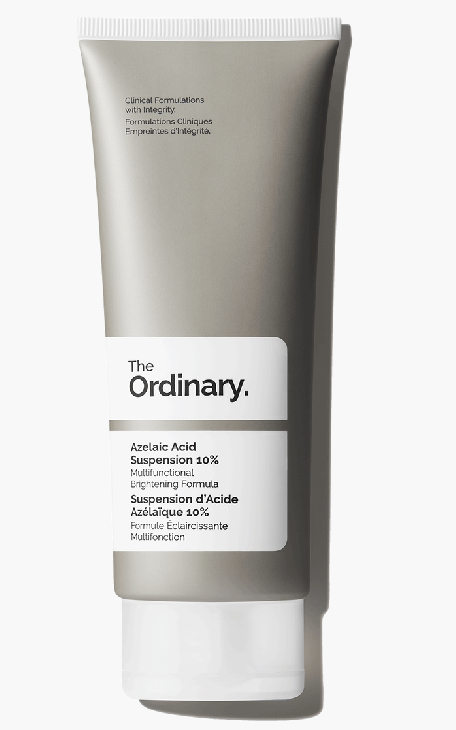Chemical vs. Physical Exfoliation
If you ask anyone with great skin about their routine, they will tell you about the different serums, lotions, and potions they are using, but it really starts with a good base, which is where exfoliation comes in. If you have ever wondered about the best way to exfoliate, I am here to break it all down for you.
Don't worry, we won't be scrubbing away any of your delicate sensibilities (or your precious skin cells, for that matter). Instead, let's talk about the two main types of exfoliation: chemical and physical.
Chemical exfoliation involves using acids or enzymes to dissolve and break down dead skin cells, while physical exfoliation uses abrasive particles or tools to physically scrub away those pesky flakes. Now, whenever I tell people about chemical exfoliation, I think they are immediately imagining a mad scientist concocting dangerous potions. But fear not! When it comes to skincare, chemical exfoliants are actually quite gentle and effective. And as for physical exfoliation, well, let's just say there's a reason why "scrubbing" is also a synonym for "cleaning vigorously." Physical exfoliation is the use of face scrubs, loofas, and face brushes. Professional physical exfoliation involves microdermabrasion and dermaplaning.
So which method is right for you? Let's just say that if you're looking for a way to achieve that baby-soft skin without feeling like you just went ten rounds with a cheese grater, chemical exfoliation might just be the way to go. There is however a time and a place for physical exfoliation, but I believe that is best left to the experts, so yes, please talk to your esthetician!
So, put away that god-awful apricot scrub and let's dive into the best way to get exfoliated skin, using chemicals! (We will tackle Enzymes another day!)
There are two main acid types that are used for Exfoliation. Those are AHA’s & BHA’s.
AHA and BHA are both types of exfoliants used in skincare. AHA, or alpha-hydroxy acids, are water-soluble and derived from fruit and milk sugars, while BHA, or beta-hydroxy acids, are oil-soluble and derived from salicylic acid. Both types of acids work to exfoliate the skin by breaking down the bonds between dead skin cells, revealing fresher, smoother skin underneath.
Commonly Used AHA’s
Glycolic Acid: Glycolic acid is an AHA derived from sugar cane. It is a small molecule that can penetrate deeply into the skin, making it an effective exfoliant. It works by breaking down the bonds between dead skin cells, which helps to even out skin tone and texture. Glycolic acid is also known to stimulate collagen production, which can help reduce the appearance of fine lines and wrinkles. It is a great choice for those with normal to oily skin types. It is one of my favorite types and I particularly love this one from the Ordinary. In fact, I use it on my heels, my cuticles, under my arms and bikini area. It is strong so go slow with it and like all new products- patch test.
Lactic Acid: Lactic acid is another AHA, but it is derived from milk instead of sugar cane. It is a larger molecule than glycolic acid, which means it does not penetrate the skin as deeply. However, this also means it is gentler on the skin, making it a great choice for those with sensitive skin. Lactic acid works by breaking down the bonds between dead skin cells, revealing brighter, smoother skin underneath. It also helps to hydrate the skin, making it a great choice for those with dry skin. I use this lactic acid serum and I have personally found that my skin reacts really well to lactic acid overall.
Mandelic Acid: Mandelic acid is an AHA that is derived from bitter almonds. It has a larger molecular size than glycolic and lactic acid, making it gentler on the skin. Mandelic acid is also an effective exfoliant, and it has been shown to improve skin texture, reduce the appearance of fine lines and wrinkles, and even out skin tone. It is a great choice for those with sensitive skin. This is a great option if you are interested in trying Mandelic Acid.
Citric Acid: Citric acid is an AHA that is derived from citrus fruits. It is a natural antioxidant and an effective exfoliant, helping to brighten and even out skin tone. Citric acid is also known to help stimulate collagen production, which can help reduce the appearance of fine lines and wrinkles. It is a great choice for those with normal to oily skin.
Commonly Used BHA’s
Salicylic Acid: Salicylic acid is a BHA derived from willow bark. It is oil-soluble, which means it can penetrate deep into the pores to break down excess oil and dead skin cells. This makes it an effective treatment for acne-prone skin, as it can help to clear out clogged pores and prevent future breakouts. Salicylic acid is also anti-inflammatory, which can help to reduce redness and inflammation in the skin. It is a great choice for those with oily, acne-prone skin. I use this one daily, however this mask is also a great option.
The Wild Card Acid
Azelaic Acid: Azelaic acid has both exfoliating and brightening properties. It is effective at reducing hyperpigmentation, as well as improving overall skin texture and tone. Azelaic acid is also anti-inflammatory, making it a great choice for those with acne-prone skin. It is neither a BHA nor an AHA. It is actually a dicarboxylic acid. While it is not technically classified as a BHA or an AHA, azelaic acid does have some exfoliating properties, as it helps to unclog pores and promote cell turnover. Here is an azelaic acid that gets great results.
Editors note:
Why I recommend the Ordinary Acids: I am not paid or affiliated with them, however I have had great success with their formulations. The other thing is cost. Their products are very cost effective which means if a particular formulation doesn’t work well for your skin, you didn’t just pay $50 for something you can’t use. Once you find an acid you think works well, by all means “upgrade” to a more expensive brand if you like, but I still stick with the ordinary as I have found I get great results without the hefty price tag. I have however listed at the end of this post some other very well-regarded brands that you may be interested in.
What are the Rewards?
The results you will get by properly using chemical exfoliants is next level. Skin that is smooth, glowing and fresh. By using chemical exfoliation, your skin cells turns over from deeper in the epidermis, rather than just sloughing off cells on the surface.
This leads to more radiant skin and helps treat underlying issues such as pimples, clogged pores, dark spots and the look of dull skin that gets more and more prevalent as we age. I am more frightened now when I see one of those electric face brushes or when I see a scrub being marketed for the face, than I ever do seeing an acid listed in the ingredients list. Keep in mind, these are NATURAL chemicals, found in nature so they are safe to use.
What about the Risks?
There are potential risks associated with using acids on your skin. Here are a few things to keep in mind:
Irritation and Sensitivity: Acids can be irritating and cause sensitivity on the skin, especially if they are used in high concentrations or too frequently. Some signs of irritation include redness, itching, burning, and peeling. It is important to start with a lower concentration of acid and gradually increase as tolerated. It is also important to pay attention to how your skin reacts and to reduce frequency or concentration if irritation occurs.
Sun Sensitivity: Acids can increase the skin's sensitivity to the sun, which can increase the risk of sun damage and skin cancer. It is important to always wear sunscreen when using acids on your skin. It is recommended to use a broad-spectrum sunscreen with an SPF of 30 or higher.
Over-exfoliation: Over-exfoliating the skin can lead to dryness, flakiness, and even compromise the skin barrier. It is important to use acids in moderation and to give your skin time to recover between treatments. It is recommended to start with using an acid once or twice a week and to gradually increase as tolerated.
Allergic Reactions: Some people may be allergic to certain acids or other ingredients in skincare products. It is important to patch test new products before using them on your face. A patch test involves applying a small amount of product to a small area of skin (such as behind the ear) and monitoring for any adverse reactions before applying to the face.
If you are Pregnant or Breastfeeding: It is always important to be cautious about the skincare products that you use, including those containing acids. While some acids may be safe to use during pregnancy and breastfeeding, others are not recommended. It is always important to talk to your healthcare provider before using any new skincare products during pregnancy or while breastfeeding. They can help you determine which products are safe for you and your baby.
Skin cycling is the term for rotating skin care ingredients. Due to the potent nature of AHA’s & BHA’s, there are certain skincare ingredients that should not be paired with them. Here are a few ingredients to be aware of:
Retinoids: Retinoids are often used in skincare to improve the appearance of fine lines, wrinkles, and acne. However, they should not be used at the same time as acids such as glycolic, lactic, or salicylic acid, as this combination can cause excessive dryness, redness, and irritation. If you want to use both retinoids and acids in your skincare routine, it is best to use them on alternating nights or at different times of the day.
Vitamin C: Vitamin C is a powerful antioxidant that is often used in skincare to brighten and even out skin tone, however, it should not be paired with acids such as glycolic or lactic acid, as this combination can reduce the effectiveness of the vitamin C. If you want to use both vitamin C and acids in your skincare routine, it is best to use them at different times of the day or on alternating days.
Benzoyl Peroxide: Benzoyl peroxide is a common ingredient in acne treatments, as it helps to kill acne-causing bacteria. However, it should not be paired with acids such as glycolic or salicylic acid, as this combination can cause excessive dryness, redness, and irritation. If you want to use both benzoyl peroxide and acids in your skincare routine, it is best to use them at different times of the day or on alternating days.
Niacinamide: Niacinamide is a form of vitamin B3 that is often used in skincare to improve the appearance of fine lines, wrinkles, and hyperpigmentation. It can be paired with acids such as glycolic or salicylic acid, but it is important to wait at least 10-15 minutes after applying the acid before applying niacinamide, as the acidity of the acid can reduce the effectiveness of the niacinamide.
Overall, it is important to be careful when pairing skincare ingredients, as some combinations can cause irritation, dryness, and reduce the effectiveness of the products. If you are unsure about which products to use together, it is always a good idea to consult with a dermatologist or skincare professional.









